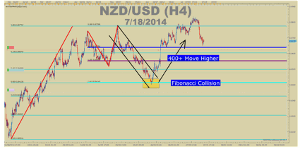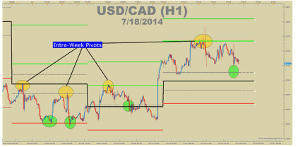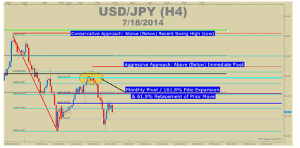Trading bounces can allow a trader to take advantage of the action reaction principle, so Tyler Yell of DailyFX.com breaks down this approach and highlights the key tools to remember.
"I believe the very best money is made at the market turns. Everyone says you get killed trying to pick tops and bottoms and you make all your money by playing the trend in the middle. Well, for twelve years I have been missing the meat in the middle but I have made a lot of money at tops and bottoms." - Paul Tudor Jones
“The law of action and reactions seems to be a fact that a primary movement in the market will generally have a secondary movement in the opposite direction of at least 3/8 of the primary movements.” - Charles H. Dow, the Grandfather of Technical Analysis
Markets do not move in straight lines which means there are opportunities for you when you see support in a correction of a trend or level where prices have bounced before. While trading bounces can be seen as a shorter-term opportunity, the concept can still be of high quality without taking on too much risk. However, to approach this lesson well, you must be comfortable with managing an open trade.
Objective of Trading Bounces
Trading bounces can allow you as a trader to take advantage of the action reaction principle that Charles Dow explains in the opening quote. This approach is more akin for day trading as a correction may only last a few days but your risk is tight and when the market reverses, you can be made aware of an important turn that can open up other opportunities.
Tools of Trade
So, the concept is simple enough, but what are the tools that can help us recognize potential turns to trade. Today, I will discuss the tools I utilize for short-term reversals but these are not definitive.
Learn FX: Fibonacci Collisions Can Help You Catch Key Turns

Presented by FXCM’s Marketscope Charts
Click to Enlarge
The preferred tools are Fibonacci Levels and more specifically, Fibonacci Collisions where both a Fibonacci Retracement and Expansion collide. The two levels do not have to sit right on top of each-other, though it’s a bonus if they do. Rather, it’s best to see the levels within 10-15 pips of each other and then you can look for a price action or channel break to help confirm a bounce is in play.
Another key tool to use is Classic Pivot Points. I don’t know what’s better about pivots, how simple they are or how effective they can be. Either way, they’re worth using to see if price pivots off one of the key levels.
Learn Forex: Pivots Provide Objective Entries and Exits

Presented by FXCM’s Marketscope Charts
Click to Enlarge
Pivots do a great job of keeping your head straight when volatility runs rampant, which can be invaluable when other traders are going crazy on a short-term move. The basic concept behind pivot points is that every next step, will be in some way, shape, or form related to the prior step. So even if a market is about to make an outsized move, a majority of the time, it will be in relation to the prior data set for which the pivot is based on, whether it is daily, weekly, or monthly pivots.
Setting Stops
Once you’ve decided whether or not trading a turn is for you, you can take the next logical step of figuring out your stop. There are two common approaches to placing the stop and there isn’t a one-size fits all approach. There is an aggressive strategy and a looser or more conservative approach.
Learn Forex: USD/JPY Showed Both Fibs and Pivots Align for a Clean Turn

Presented by FXCM’s Marketscope Charts
Click to Enlarge
The aggressive approach effectively has you trading with tight stops that are more likely to get stopped out. This approach relies on a low win ratio but is also keen on protecting capital. The conservative approach is so named because you’re allowing the market to move a little bit more to see if the trade works out and uses wider stops. The conservative approach can place the stop above or below the prior swing high or low. This allows you to only be taken out if the trend has likely turned.
By Tyler Yell, Trading Instructor, DailyFX.com




















